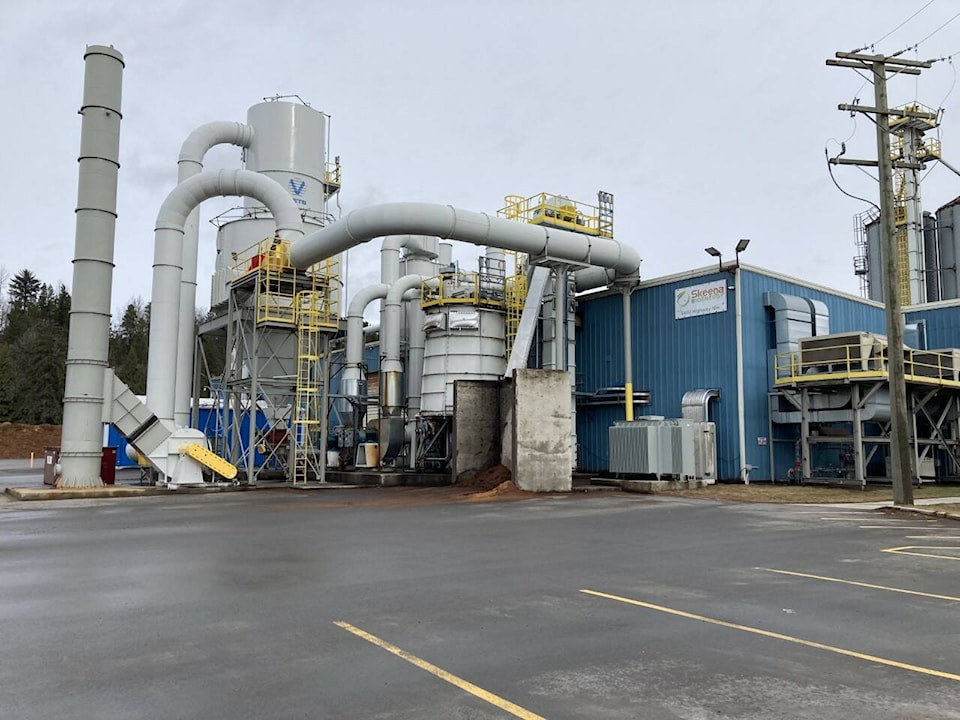Skeena Sawmills has asked the provincial government to help finance a $17.5 million plan to return its sawmill and adjacent Skeena Bioenergy pellet plant to profitability within three years.
Improvements at both facilities would increase the value of the raw material each processes into final products and reduce costs, Skeena Sawmills chief operating officer Greg DeMille told Terrace city council March 27 in asking for a letter of support to bolster its financial request to the province.
“This would help get our feet back under us,” he said of the improvements forecast in the plan.
And that would then set the stage for a longer term and far more expensive modernization plan, DeMille continued.
As it stands, both plants have been shut since the end of January, idling approximately 170 workers, a figure that does not include loggers and truckers who provide the raw logs.
Skeena Sawmills cited low-quality wood, high fibre acquisition costs and low markets as drivers of the closures.
The three-year plan is in four phases:
- Adding a log deck to the sawmill so that it can cut more wood into more value-added timber products at a cost of $1.5 million to $2 million.
- Adding a second dry kiln which would cost $5 million at the low end or possibly as high as $10 million depending upon availability. This would increase the value of the final product because it would be dry.
- Instead of using expensive natural gas to dry pellets at the pellet plant, moisture would be squeezed out in a press. A mechanical device would cost $4.5 million.
- Spending $6 million at the mill for minor improvements such as a grade scanner would increase productivity and increase the value of the products the mill produces.
The timber deck is “really the foundation of our strategic plan moving forward,” said DeMille of the first phase.
That’s because a saw trimmer as part of that phase would boost its timber production to 40 per cent of its total production from the current 12 per cent.
The company sells squared timber to the Alberta petroleum industry where it is used as rig mats, the name for timber laid down so vehicles and equipment can be driven over soft ground.
The additional improvements called for in phase four would move the mill to the point where it could process smaller wood than is now possible.
“I think it puts us into the position to use small wood into the future,” said DeMille, adding that a major investment of perhaps $30 to $40 million would be needed once the three-year plans put operations back on a solid footing.
China-based Roc Holdings purchased the sawmill from West Fraser in 2011 and since then company officials have said it has lost $135 million.
Council agreed to provide a letter of support for the application for provincial money.
A second request to forgive the dollar value of the taxes that would result from the property’s increased assessed value owing to the planned improvements for a period of three or more years was referred to city staffers for study.
A third request to refund back to Skeena the $125,637 in property tax penalties and interest it has paid since 2019 and to forgive an outstanding $119,745 in penalties and interest charged for a total $245,382 was withdrawn.
There’s no legal mechanism for the city to consider such a move.
The money Skeena wants from the province would come from the B.C. Manufacturing Jobs Fund announced earlier this year. There’s up to $90 million to be spent over three years.
”The fund will support high-value industrial and manufacturing projects to drive clean and inclusive growth in rural, remote and Indigenous communities,” the province said.
Skeena Sawmills dates back to the 1960s when it was owned and operated by a local group.
It was subsequently purchased by West Fraser and became an integral part of its northwestern B.C. forest operations, supplying chips to its Eurocan pulp mill in Kitimat.
A lengthy 2007 strike throughout the coastal forest industry idled the mill and it never fully re-opened when a new labour contract was signed. However, it did continue to supply chips to the pulp mill in Kitimat.
That part of its business ended in late 2009 when West Fraser announced it was closing its Eurocan pulp mill and Skeena Sawmills was then placed in care and maintenance.
West Fraser then announced the sale of the mill, along with associated wood licences in 2011 to Roc Holdings.




